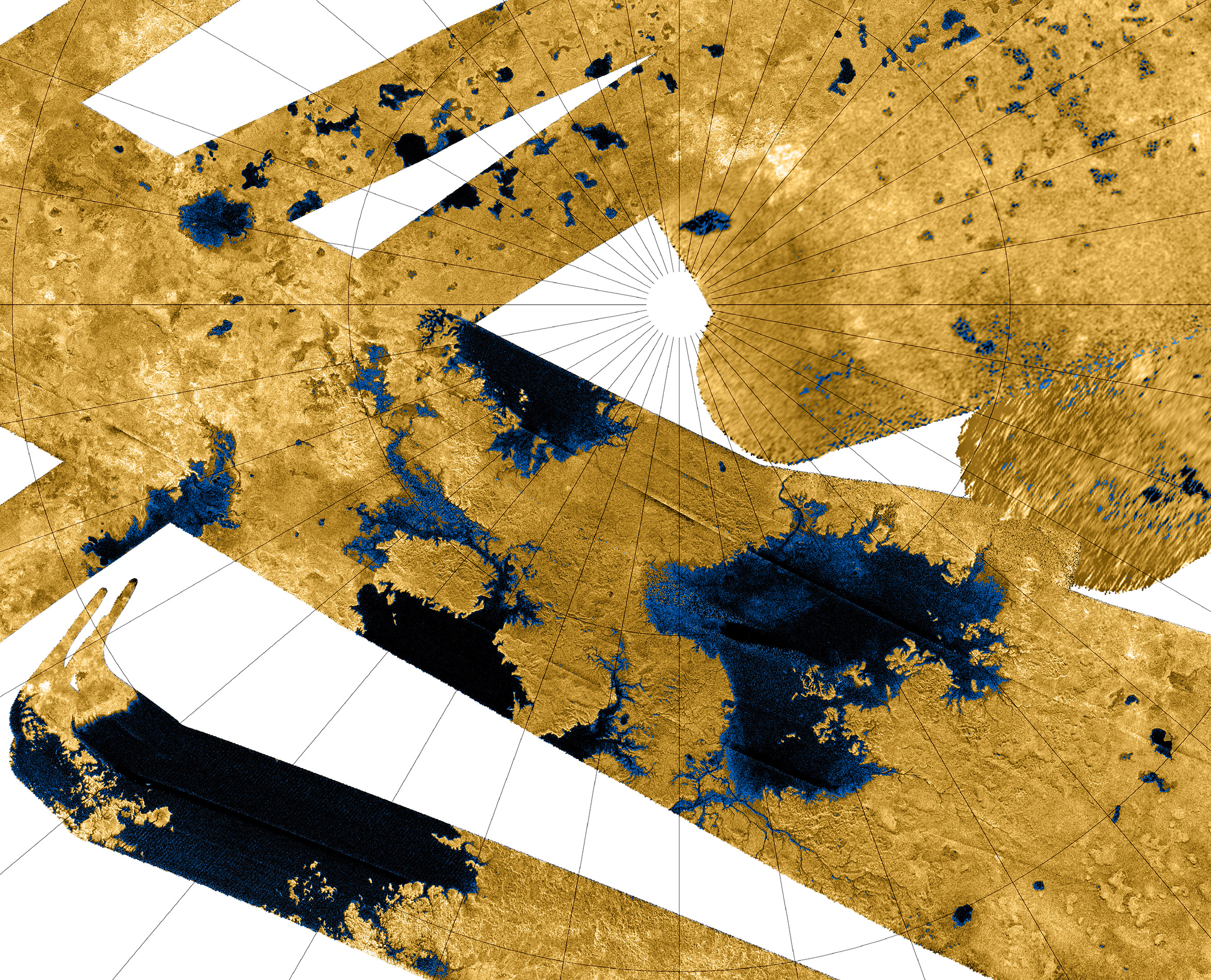Meet Titan:
Src: Wiki
The above image of Titan (compared with the Earth and Moon) was taken by Cassini, humanity's only ever orbiter around Saturn, which is fighting for its life against budget cuts. The image is not what your eye would see, but rather it is an infrared image which peers through the haze to the surface below. While our eyes would only see a smooth, butterscotch/orange fog, Cassini sees the dark and light areas as different types of terrain. Titan certainly has some interesting features, like boulders of ice, possibly ice volcanoes, and even seas of methane!
Src: Wiki
This radar image of the north polar region shows seas of methane in dark blue. Titan is so cold that methane, forever a gas on sweltering Earth, actually has a cycle like the water cycle responsible for much of our weather. It exists as a solid, liquid, and gas, and even forms clouds and rain! Titan is one of two known bodies in our solar system with liquid on its surface, and you're sitting on one of them.
This is incredibly exciting, and scientists have been clamoring for a probe to investigate the lakes ever since they were discovered. The problem is that Titan is so incredibly far away, getting a mission out there takes years and sending signals back to Earth takes hours and a lot of power.
Additionally, the lakes are at the north pole which is tilted (like the Earth's pole, which gives us seasons). Since Earth is so close to the Sun (viewed from Saturn), we can basically think of daylight on Titan as a good sign of a line of sight to the Earth. Like our own, Titan's poles experience long periods when the Sun never sets (when the pole is tilted towards the Sun), and long periods where it never rises (when tilted away). Currently, Titan's north pole is tilted toward us, giving us an opportunity to communicate with a probe floating in the lakes directly. In 2025, however, that will change, and the north pole will enter its winter season, never seeing the Sun or Earth for years (until 2040). This gives us a deadline: Get a probe onto the lakes in time to complete its mission before the clock nears 2025, or else we'll have to either wait 15 years, or pay the extra cost of bringing along another Saturn orbiter with our lake probe to relay communications (which may be impractical for other orbital-mechanics-related reasons as well as hugely inflationary for the mission cost).
2025 sounds far away, but when you realize that Cassini took 7 years to reach Saturn, it means that in order to ensure enough time for a successful mission, we'll have to launch our lake probe by 2016 or else there's a good chance we won't see the shorelines of Titan until after 2040. To put it in human terms: If you've got young children now, they'll probably give you grandchildren before we find out what it's like to float on an extraterrestrial sea if we miss this opportunity. The odds are not looking good with the current funding situation though, which highlights again the importance of properly supporting NASA's exploration and science directorates. If you want to find out what's in those seas, then join me in letting Congress know.

